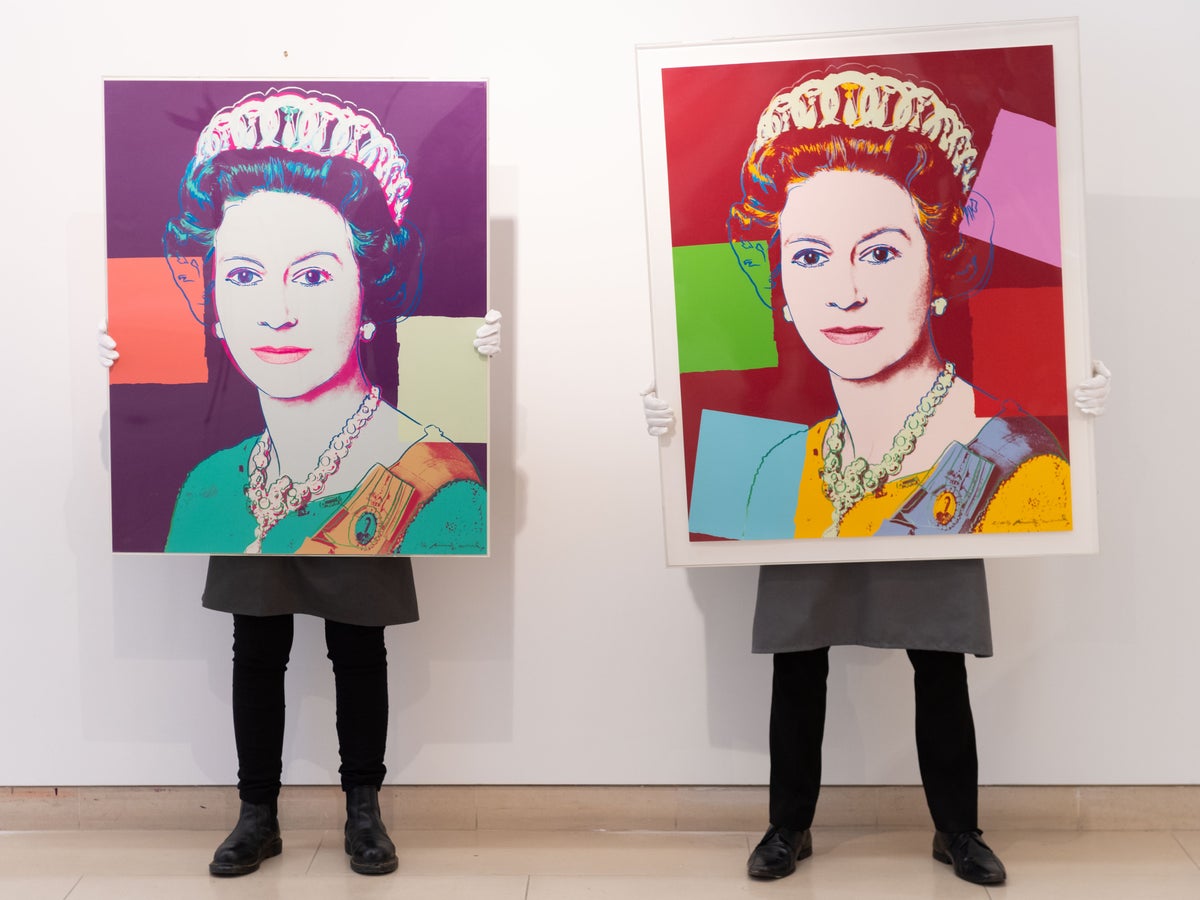
She has been the face on our bank notes for 60 years, subtly aged in successive engravings and given, in the last few years, a slightly inauthentic smile at the corners of the mouth.
Until we stopped writing letters, her face appeared on the top-right corner of every envelope we mailed.
On canvas, she’s been portrayed as overwhelmed by royal robes (Terence Cuneo), as a stern Joan of Arc (Pietro Annigoni), as a pop art icon (Andy Warhol), a veal-faced panto dame (Lucian Freud) and as a martyr with eyes painfully shut (Chris Levine).
Her face became as familiar to us as our own mothers’, though its palette of expressions is more limited.
For more than half a century, the Queen nailed an expression of polite semi-interest, some notches above indifference without becoming actual eagerness, when confronted by everything from Sixties rock ’n’ roll and the Profumo affair to Thatcherism, gay rights and the internet.
To each she raised the same incurious gaze and, in the popular culture of her reign, that face has been used for a variety of effects.
First there were photographs, then TV.
The nation’s first sighting of the former Princess Elizabeth as Queen was at London Airport in 1952 when she returned early from a trip to Kenya after hearing that her father, King George VI, had died.
Stepping down the aircraft stairs she looked slender, pale-faced, black-clad, shocked by the burden of expectation on her shoulders – but hardly regal.
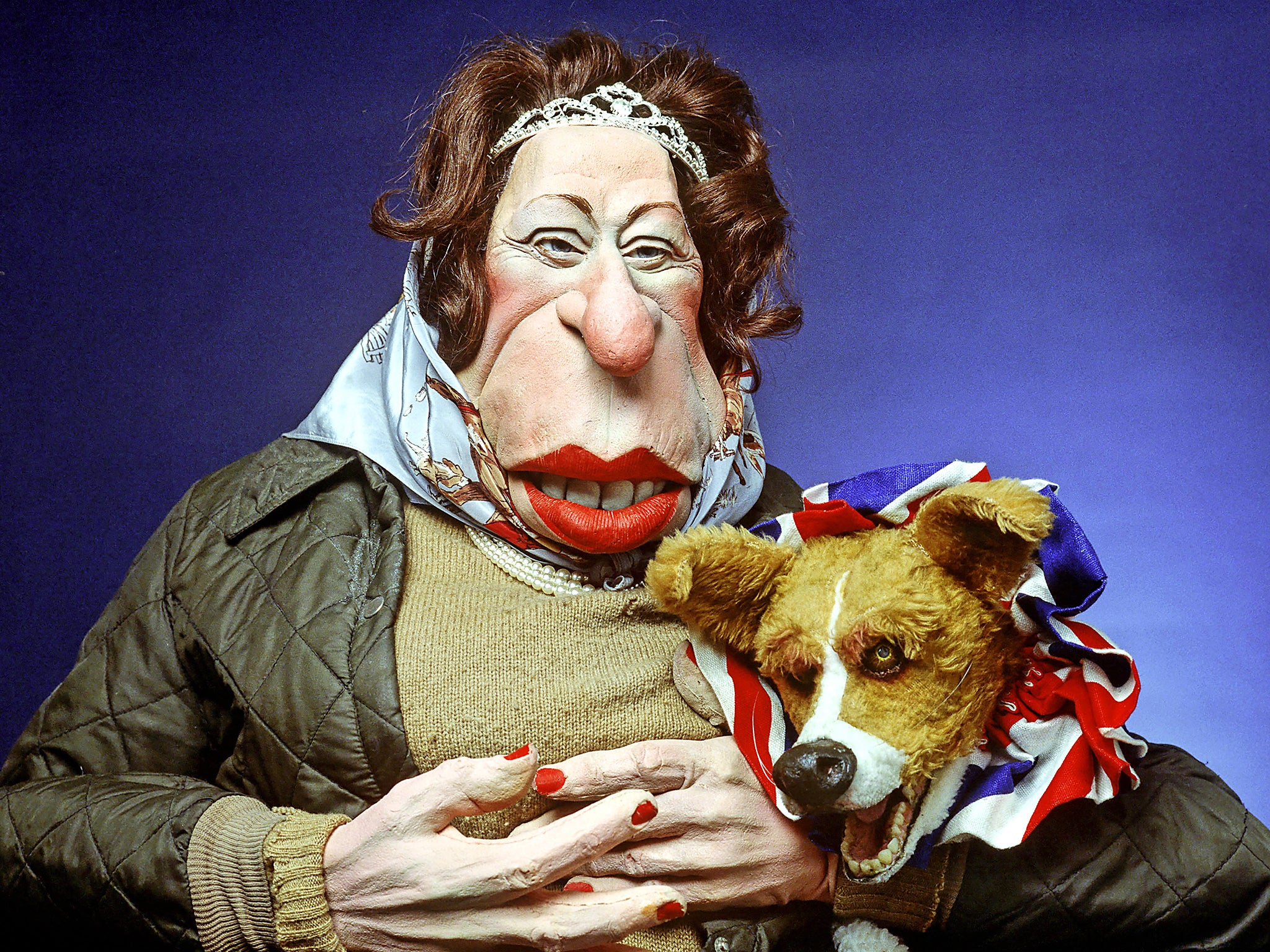
Sixteen months later, on Coronation Day, 2 June 1953, half the nation gathered around new-fangled television sets as Geoffrey Fisher, the saurian Archbishop of Canterbury, placed the crown on her head and presented “Queen Elizabeth, your undoubted Queen”.
The slight 27-year-old in her white silk gown looked serious, her hands demurely folded in her lap. She seemed far too young and girlish to be a successor of Queen Victoria.
In the 1950s, she embodied the image of young British motherhood in twinsets and skirts. But as the 1960s exploded into a riot of colour, youth and classless, anti-establishment joy, the royals seemed boringly irrelevant.
Things improved in 1969 when Richard Cawston was allowed to bring TV cameras into the hallowed presence: The Royal Family became the most-watched documentary in TV history (drawing in 23 milllion viewers), receiving plaudits even from left-wing reviewers.
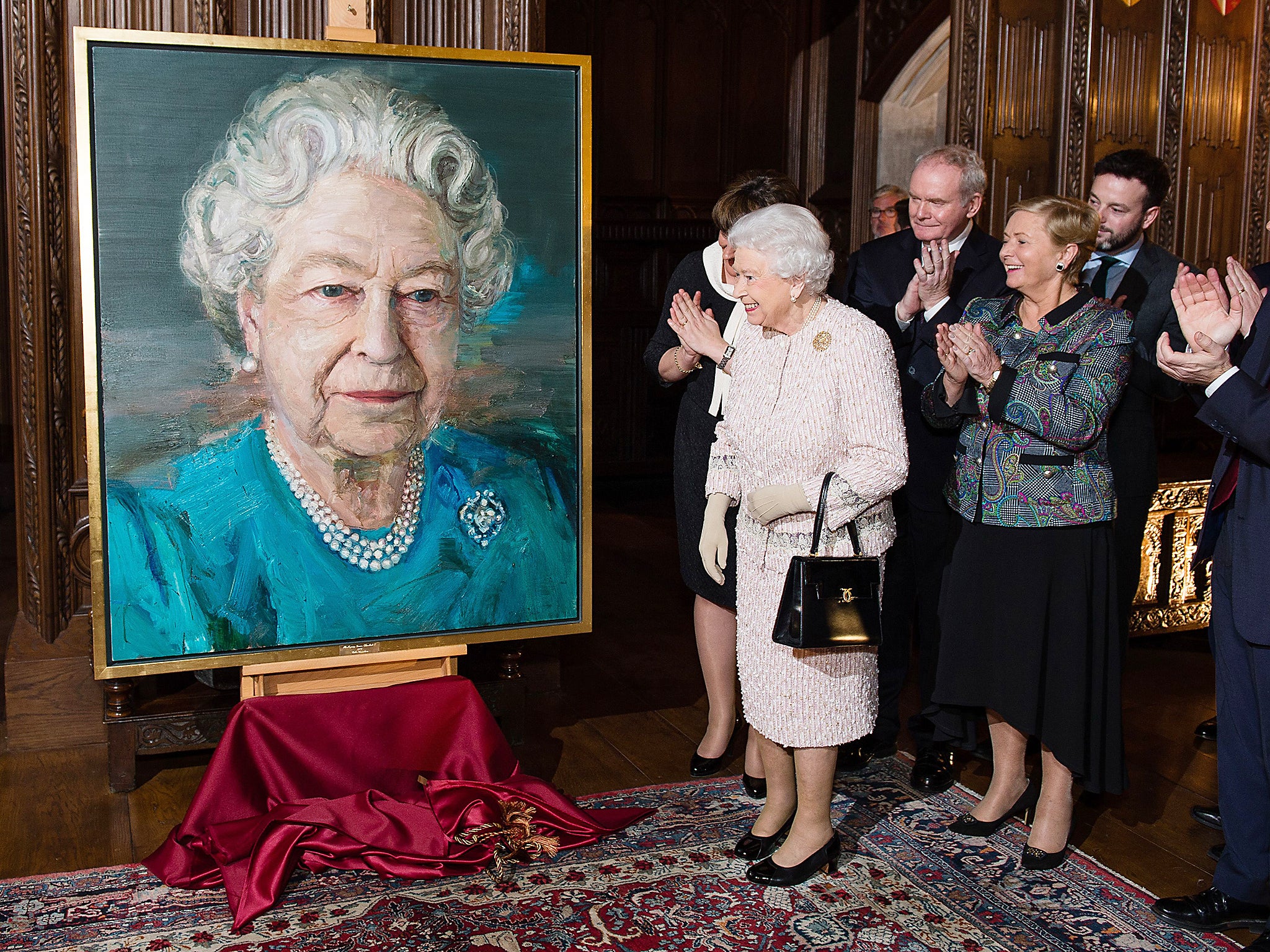
But by 1977, the year of the Silver Jubilee, royalty was under attack.
Republican feelings found several outlets. The New Statesman ran an anti-Jubilee edition, in which the Queen was called “the doll in the golden coach”.
The Sex Pistols, gang-leaders of the punk revolution, released “God Save the Queen” (“A fascist regime… She ain’t no human bein’”), whose sleeve carried the monarch’s face with eyes and mouth obliterated by the band’s name and the single’s title.
It was a bit of cheek by designer Jamie Reid, but the record went to number two in the charts and the image entered the national consciousness.
She was further mauled in the mid-1980s when Spitting Image, the latex-puppet show, routinely pictured her as a confirmed anti-Thatcherite: she was given a Campaign for Nuclear Disarmament badge (or sometimes a Socialist Workers’ Party one) and posed beside a bust of Vladimir Lenin.
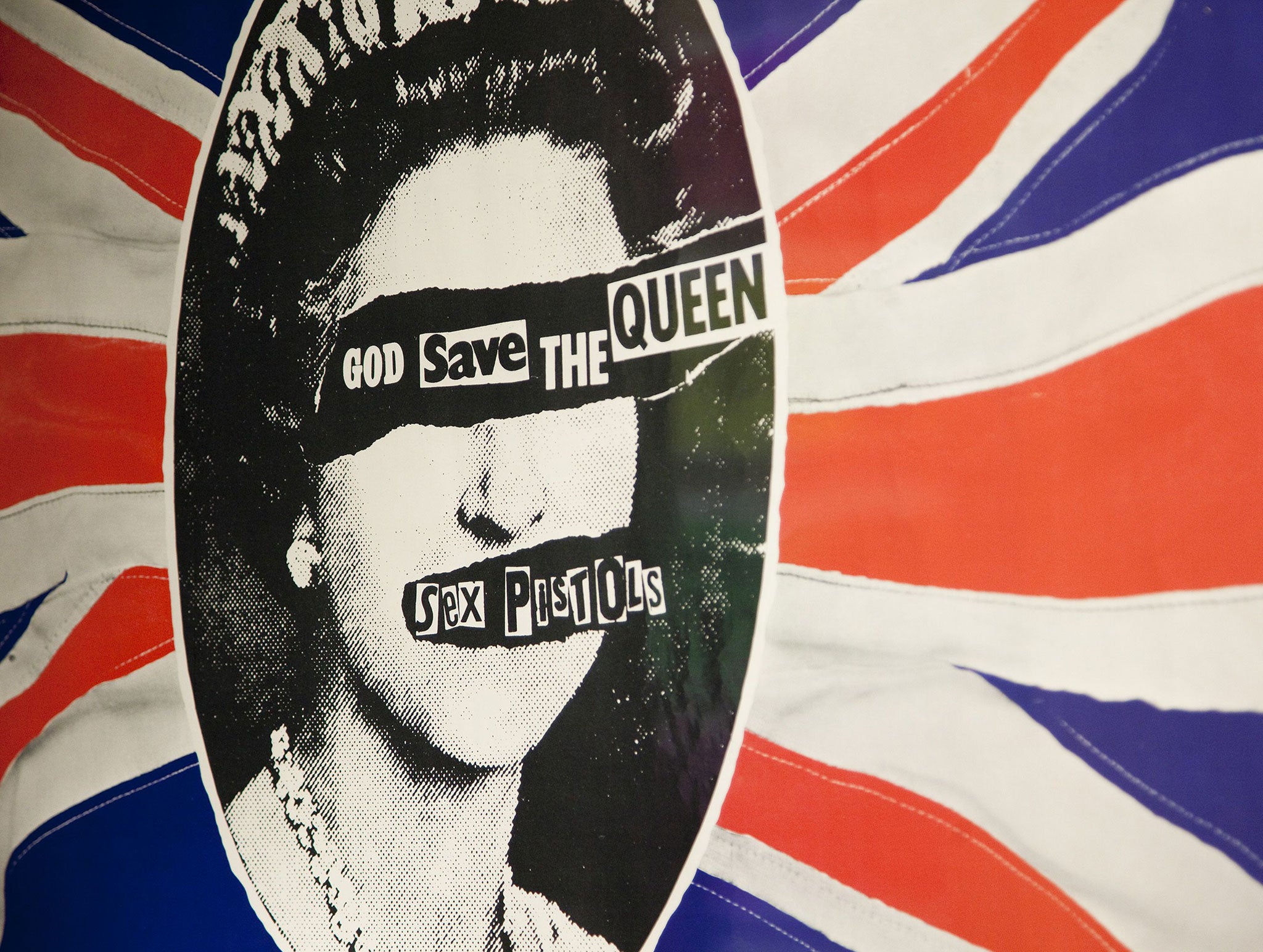
Writers enjoyed playing with ideas of the Queen outside of her comfort zone.
Sue Townsend published her novel The Queen and I in 1992, imagining the royal family forced, after a republican coup d’etat, to exist on a council estate on “Hell Close”, a slice of suburbia in which the Queen is prohibited from keeping her corgis at home or grazing horses in the garden and has to wait five hours to see an NHS doctor.
It’s a bracing reality check for the pampered royals but Her Majesty, naturally, learns to adapt.
In The Uncommon Reader (2007), Alan Bennett speculated on what might happen if the Queen began borrowing novels from a mobile library and discovered the joys of literature. Deeply engaged with Dickens, the Brontes and Nancy Mitford, she neglects her duties and embarrasses visiting dignitaries by exposing their ignorance of the Western canon.
It’s a charming lesson about the subversive power of reading, in which the royal is pictured as an eager learner rather than an entrenched philistine.
But the Queen and popular culture were never natural bedfellows: her world was too backward-looking and traditional, too full of cold Scottish moorlands, shooting parties and concepts like duty to share space with avant-garde art, boy bands and social media.
They were, however, the natural element of Princess Diana, and when Diana died in 1997, public anger and mourning looked for someone to blame and found it in the Queen.
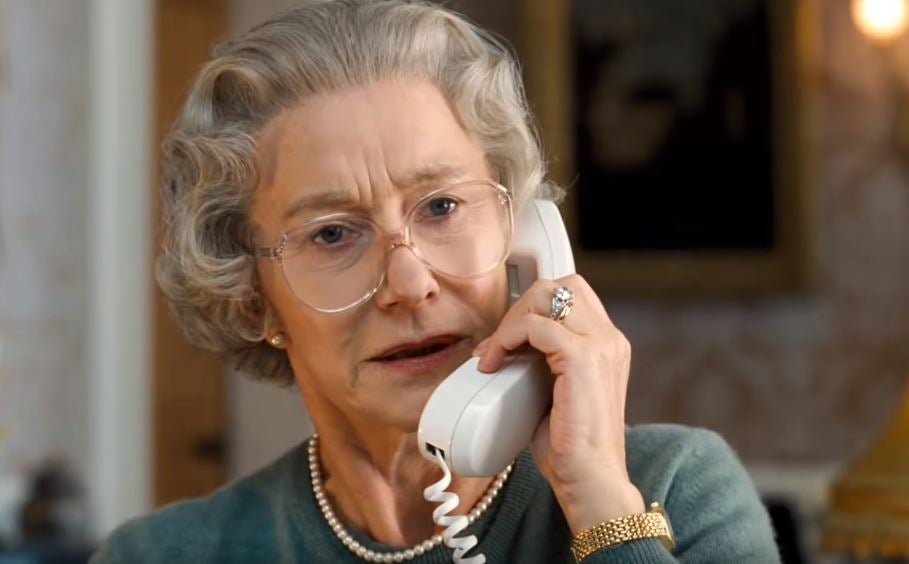
She had stayed at Balmoral (comforting her grandsons, the grieving young princes) while, in London, the grounds of Kensington Palace were carpeted with flowers, teddy bears and sentimental poems.
The empty flagstaff over Buckingham Palace became a damning symbol of royal neglect.
The week of constitutional drama – as monarch and subjects struggled with an unprecedented breakdown in their relationship – became a gripping movie, The Queen (2006), directed by Stephen Frears with Helen Mirren as the beleaguered monarch.
The film convincingly conveyed a moment in which the Queen had been forced to balance real human concern with her instinctive royal detachment and its subject was impressed enough with its sympathetic treatment of her dilemma to invite Frears and Mirren to the Palace for tea.
By the time of her Golden Jubilee in 2002, the Queen’s popularity had returned. Many predicted a poor turnout but, perhaps re-sensitised by the death and funeral of the Queen Mother that same year, huge crowds lined the Mall.
At the climax of a huge “Party at the Palace” concert, the Queen took to the stage, surrounded by rock stars; only if she had reached up and tugged Ozzy Osbourne’s cheek could she have received a warmer reception.
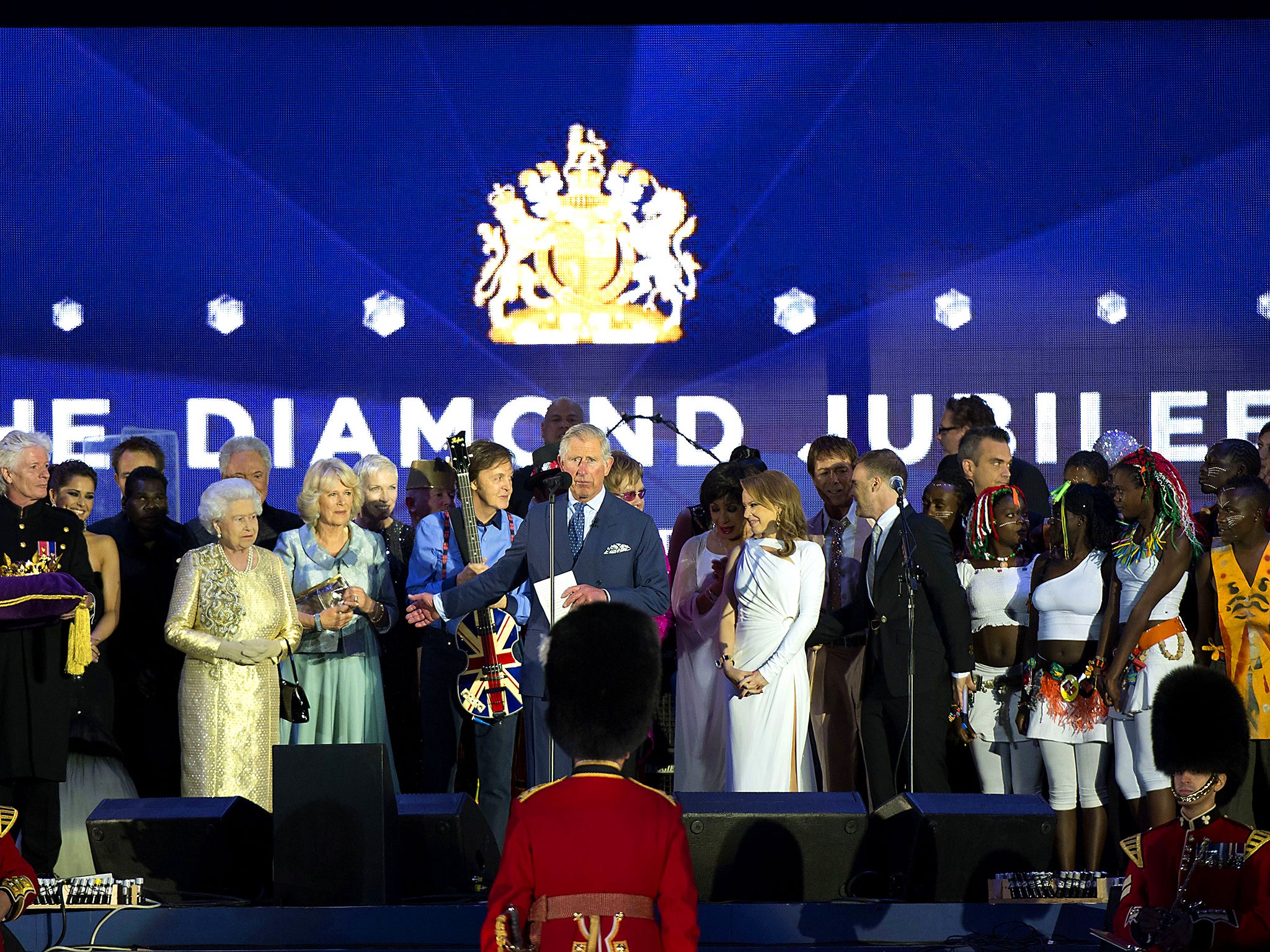
Her startling intervention during the opening ceremony of the 2012 London Olympic Games, when she linked up with James Bond (Daniel Craig), ostensibly to take a helicopter ride and parachute into the Olympic stadium, showed not just a willingness to embrace pop culture and participate in its fictions but a tacit acknowledgement that she herself had become an emblem of British culture, like 007 – or Sgt Pepper or Patsy from Absolutely Fabulous.
She was always a character on the stage, and in the soundtrack, of her subjects’ lives, until the details of how she lived were eclipsed by the fact of her presence in our backgrounds – like a beloved building you pass every day, a cherished portrait on a living room wall.
That process was perhaps arrested somewhat by the arrival of Netflix’s The Crown in 2016, which, like The Queen, was written by Peter Morgan and reassessed the monarch’s decades-long career of public service and self-sacrifice in a largely friendly light, the programme benefitting enormously from its high-calibre cast and two particularly fine performances from Claire Foy and Olivia Colman as Elizabeth herself at different stages of her life.
We have taken the Queen’s presence for granted, but her image –oil-painted, punked, impersonated, disparaged, satirised, post-modernised – was always in our peripheral vision, a symbol of continuity, of strength and national devotion.







